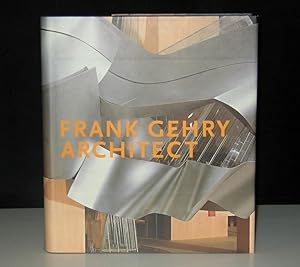Synopsis
Since the 1997 completion of what many consider his greatest achievement—the stunning Guggenheim Museum in Bilbao, Spain—Frank O. Gehry has soared to the forefront of contemporary American architecture. Long recognized by his peers for his innovative designs, Gehry now enjoys a new level of prominence in the popular imagination. This book, the catalogue of the first large-scale retrospective of Gehry’s work in 15 years, examines the architect’s unique vision and provides the historical perspective with which to interpret his audacious accomplishments.
Essays by noted museum curators and architectural historians explore his iconoclastic spirit and trace his melding of unconventional materials and forms. Photographs, drawings, plans, and scale models communicate the breadth and complexity of Gehry’s work and show how, in his view of architecture as sculptural space, Gehry has opened up a world of new possibilities for architecture.
Reviews
Ragheb's catalog for the first large-scale exhibit of Gehry's work in 15 years includes essays by architect-scholars Jean-Louis Cohen, Beatriz Colomina, and William J. Mitchell that thoroughly analyze the Los Angeles-based architect's vision and daring over 40 productive years. This international touring exhibition traces Gehry's development from his earliest residential projects to his most recent and controversial public buildings. Included is his best known: the Guggenheim Museum Bilbao (1991-97), a creation of limestone, glass, and titanium that brought the architect worldwide renown. Since Bilbao, all of Gehry's projects get a lot of attention, including the Nationale Nederlanden Building (1992-96) in Prague, the Experience Music Project (1995-2000) in Seattle, and the DG Bank Building (1995-2001) in Berlin, each assessed in detail with photos, drawings, plans, and scale models. Major projects in progress, such as the Ray and Maria Stata Center (1998-) at MIT, are also discussed. With a biographical chronology, a listing of projects, and a bibliography, this is an essential addition to the architectural shelf. Whitney Scott
Copyright © American Library Association. All rights reserved
Frank Gehry represents a paradox in architecture. Embraced by established financial and cultural institutions, his work is also viewed as avant-garde. Gehry first drew notice with his original use of ordinary materials, then progressed to nonorthogonal undulating forms, often employing a reflective titanium cladding. His highly sculptural buildings develop from lively, fluid sketches and study models that often include crumpled paper. All of this is ably presented in an exhibition at New York's Guggenheim Museum, for which this publication is the exhibition catalog. The primary didactic materials from the exhibition form the text, supplemented by five important essays: Mildred Friedman writes on the scope of Gehry's career, Beatriz Colomina offers an exhaustive analysis of his Santa Monica house, Cohen examines his urban work, J. Fiona Ragheb provides a comparison of Wright's and Gehry's approaches to form, and William J. Mitchell explains Gehry's dependence on computer-assisted design and modeling. Although the color illustrations are lavish, the photographs of models are poorly resolved, and there are virtually no floor plans. The book complements but does not supersede Francesco Dal Co and Kurt W. Forster's more discerning Frank O. Gehry: The Complete Works (Monacelli, 1998); nonetheless, this volume should be acquired by larger architecture collections. Paul Glassman, New York Sch. of Interior Design Lib.
Copyright 2001 Reed Business Information, Inc.
"About this title" may belong to another edition of this title.




